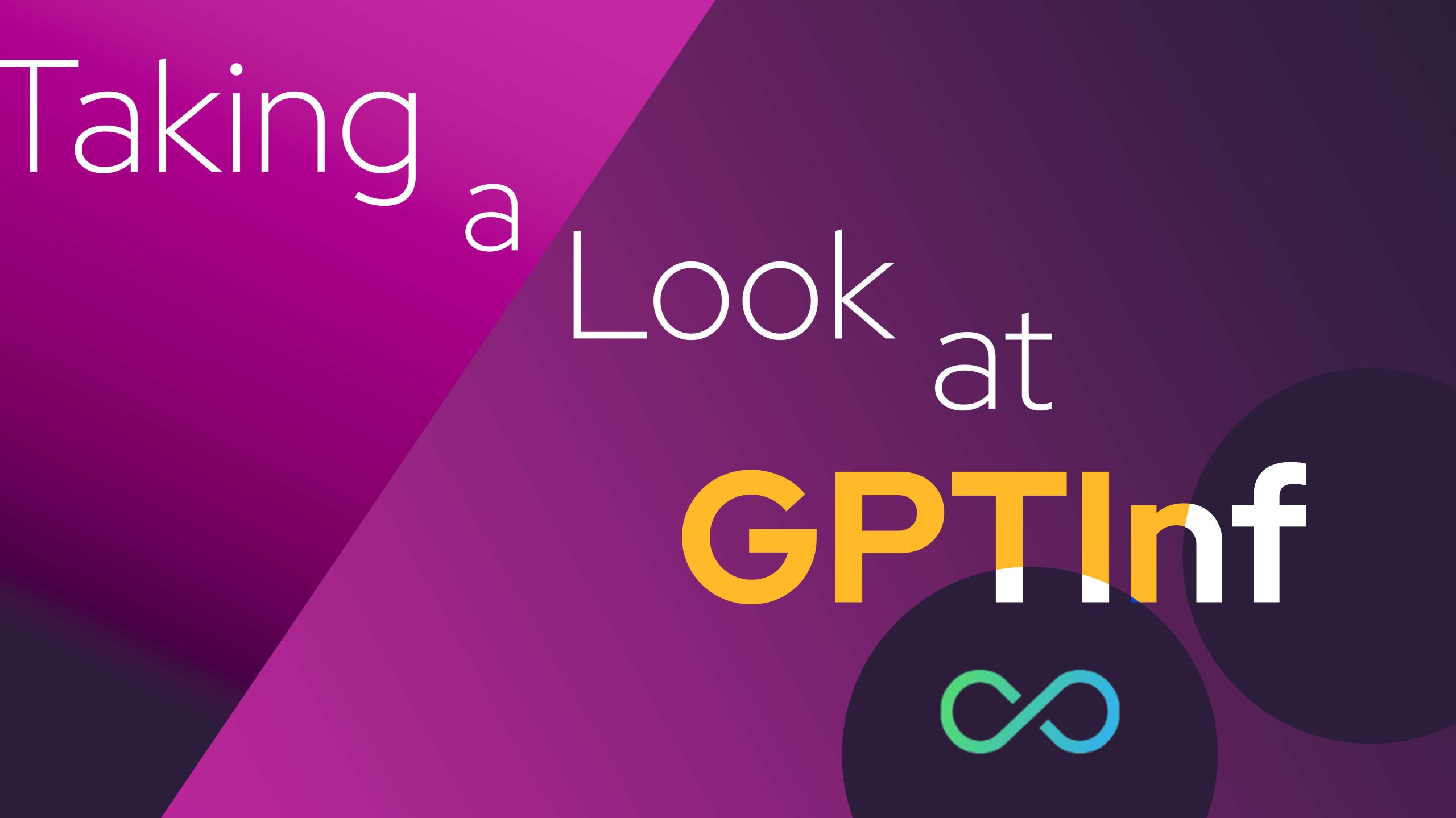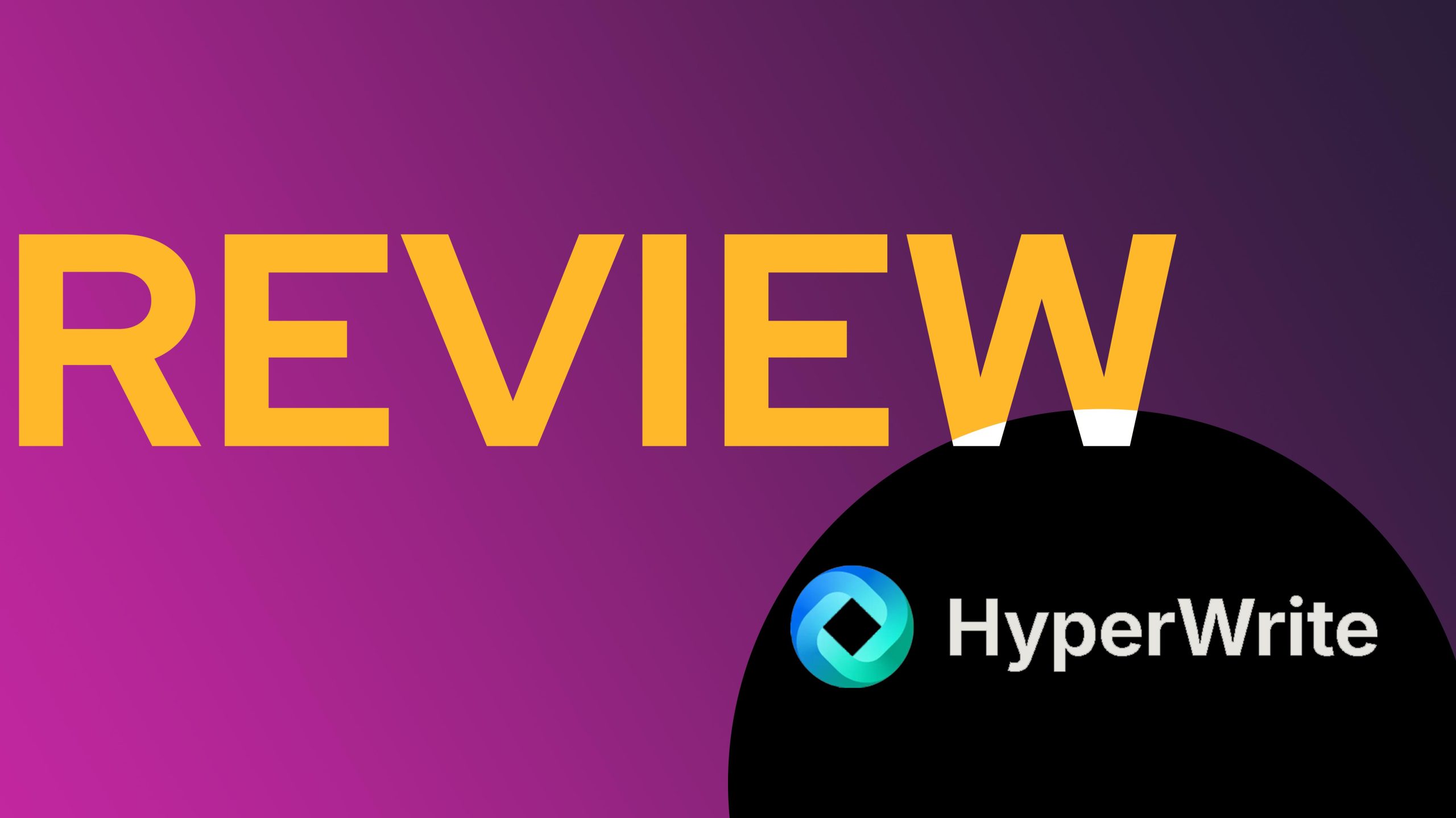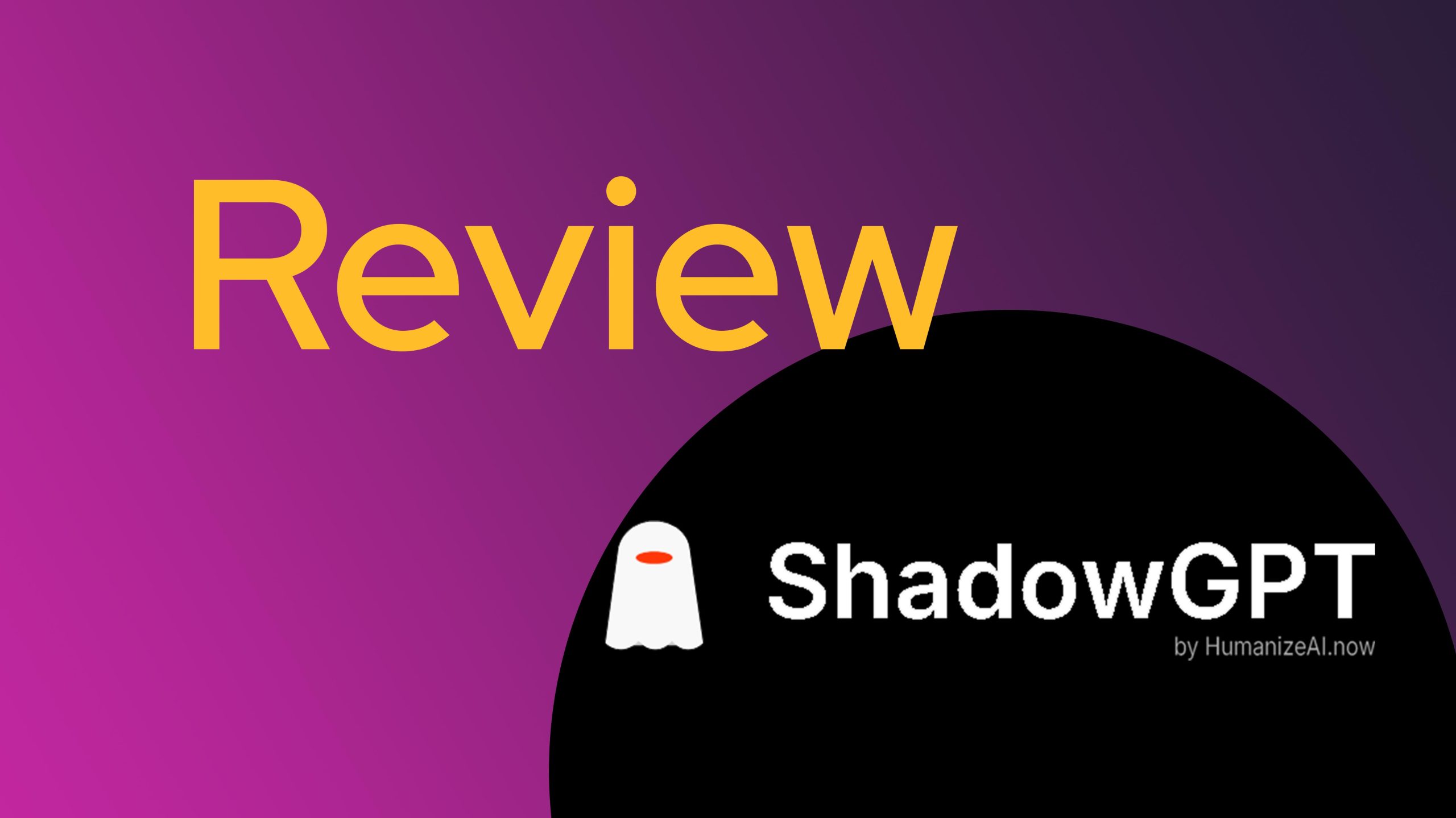GPTInf says it can change things. It says it can turn robotic words into words that sound like you and me. This change can trick tools that spot robot talk. To see if this was true, we had a close look at GPTInf. Here’s what we found out.
We’re here once again reviewing another tool that claims it can trick AI Detectors, this time, it’s GPTInf. Like other tools we’ve tested and proven false, GPTInf says it can change words and phrases to fool the Netus.ai AI Detector and others.

In this post, we will share the results from a little experiment we conducted. We wanted to see if GPTInf’s claims were indeed honest, or if it’s just another tool that promises to trick AI but doesn’t really work.
Let’s dive into a few interesting things!
- First, we’ll peek into what GPTInf is all about.
- Then, we’ll find out how this tool does its magic.
- Ever wondered why GPTInf and similar tools have become so popular? We’ll find out the reason.
- We’ll also see what happens when we use GPTInf to make blog posts!
- Lastly, we’ll figure out if stuff made by GPTInf can trick AI detectors. It’s going to be fun, stay tuned!
What Is GPTInf?
GPTInf wants to switch things up. What’s their aim? They’re after presenting AI-devised information in a snazzy new way that enables it to go unnoticed. And more than that, it’ll clear the hurdles set by AI spotting tools with ease.
Let’s get into how it works. This wizard of a tool snatches up your AI-written text and lends it a new voice. The goal? To slyly sidestep the contents’ AI roots, evading the watchful lens of AI detectors such as Netus.ai.
Why Is There Interest In GPTInf?
If you run a website or any online venture, you’ll probably jump at the opportunity to whip up content faster. And why not? More top-notch content often means more possibilities to attract new customers through organic search.
However, you might hit a bump. Google has made it clear in its latest algorithm updates. Sites with content that shows traces of AI creation could face penalties. This makes using AI tools a bit of a tightrope walk.
Despite this, tools like GPTInf promise a solution. It offers to dodge these complications by adding a human touch to content. This is an appealing prospect for many.
Are the Results Effective? Let’s Find Out.
What do people really want to know about GPTInf? Is it how many people use it? No, they want to know if it works well.
They don’t want to just hear what GPTInf has to say in their ads. They’re asking, “Does it deliver on its promises?” To find out, we did some testing.
The Test
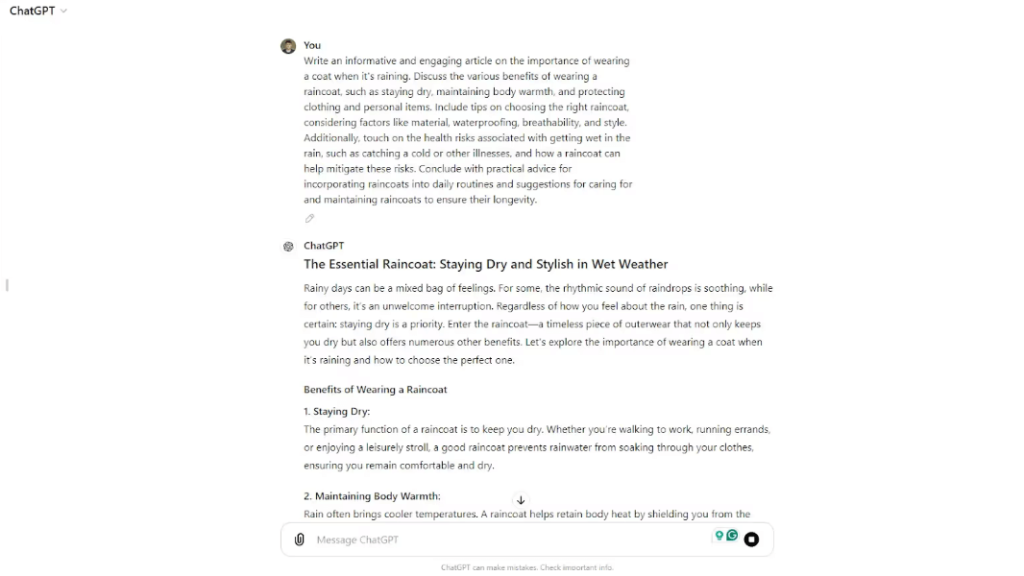
We’ve checked our fair share of AI tools. These are ones that say they can sneak right past AI systems designed to catch them. Just like we’ve done before, we decided to test GPTInf in the same way.
Right, so the first step was generating an article using ChatGPT. We took this article and put it through the AI systems that GPTInf says it can dodge, one of them being Netus.ai.
Second step involved selecting ChatGPT. Why? It’s simply the most used AI tool that a lot of people can get their hands on.
Final step, we took the AI-generated text and put it through the top-notch AI detection tools. After, we did the same with GPTInf’s version. Same process, same tools, just to see what happens.
Here is our prompt:
Write an informative and engaging article on the importance of wearing a coat when it’s raining. Discuss the various benefits of wearing a raincoat, such as staying dry, maintaining body warmth, and protecting clothing and personal items. Include tips on choosing the right raincoat, considering factors like material, waterproofing, breathability, and style. Additionally, touch on the health risks associated with getting wet in the rain, such as catching a cold or other illnesses, and how a raincoat can help mitigate these risks. Conclude with practical advice for incorporating raincoats into daily routines and suggestions for caring for and maintaining raincoats to ensure their longevity.
For this test, we used these AI detectors:
- Netus.ai
- Writer AI
- GPTZero
- CopyLeaks.
The Results
Netus.ai Score
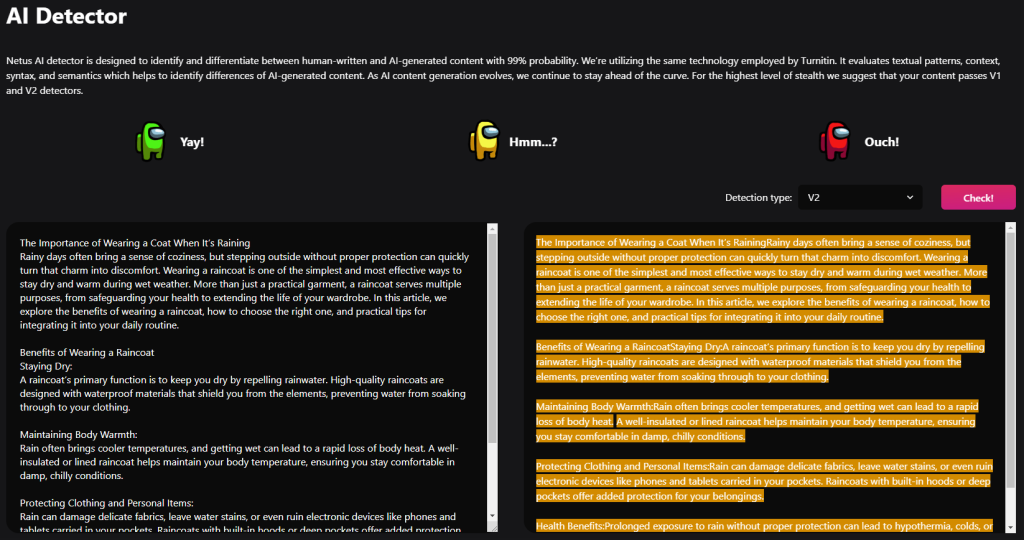
Original content: 100% AI & 0% Human-written
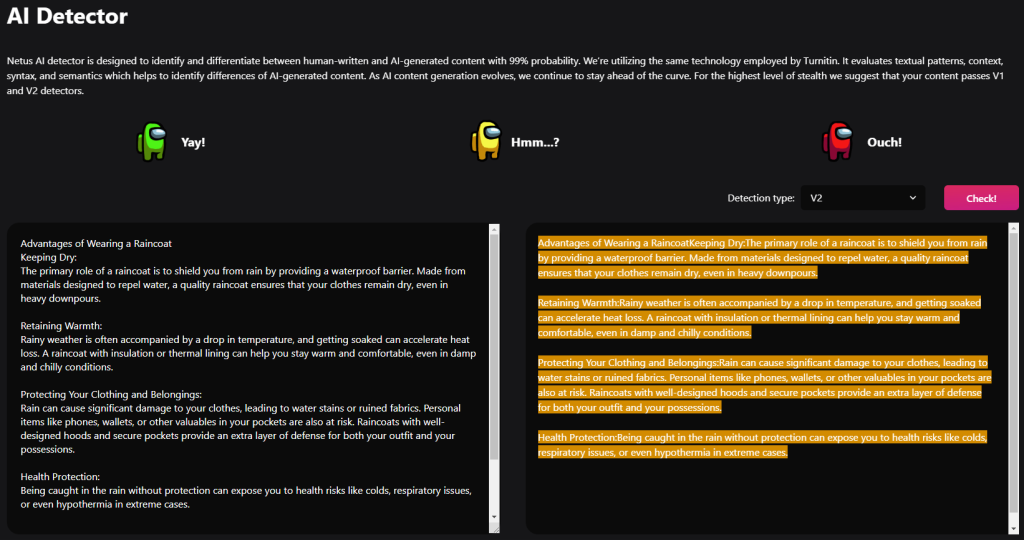
BypassGPT version: 100% AI & 0% Human-written
GPTZero Score
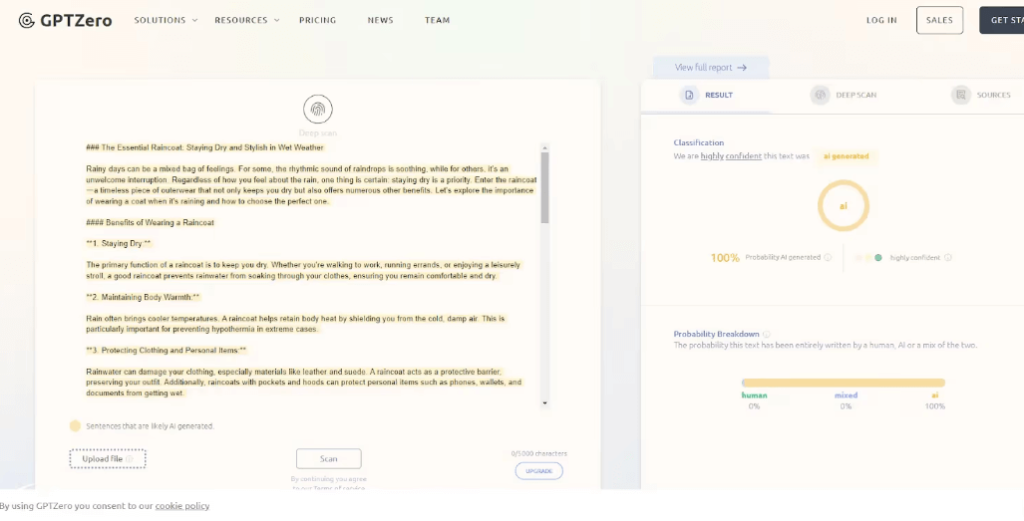
Original content: 100% AI & 0% Human-written
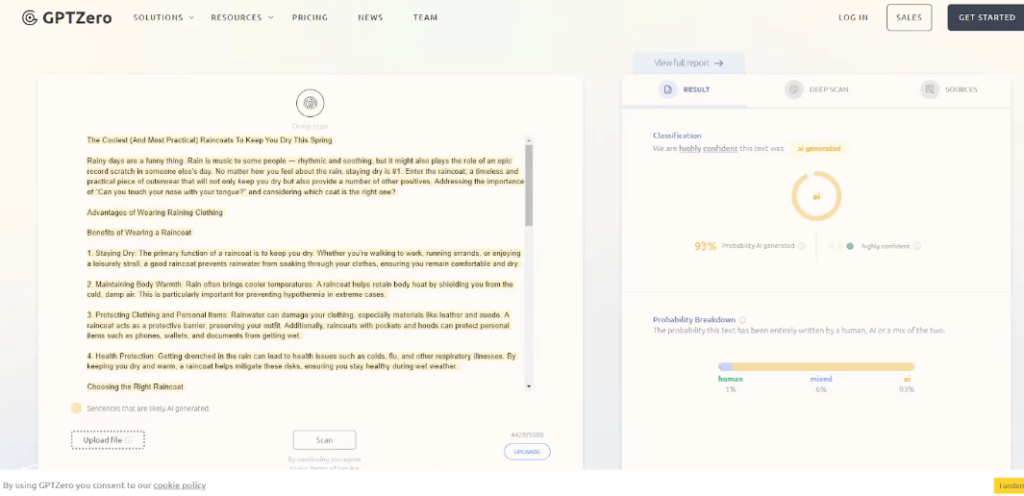
BypassGPT version: 100% AI & 0% Human-written
Writer Score
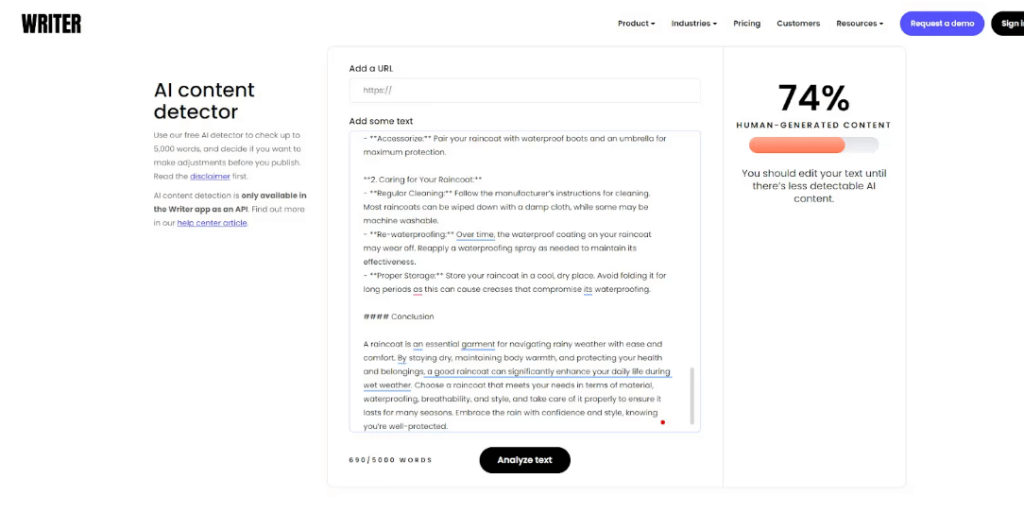
Original content: 18% AI & 82% Human-written
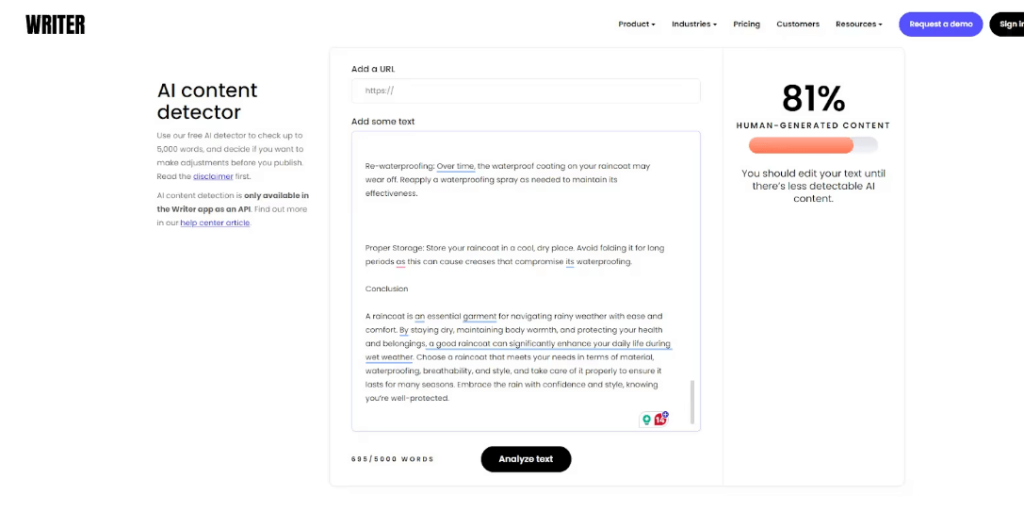
BypassGPT version: 19% AI & 81% Human-written
CopyLeaks Score
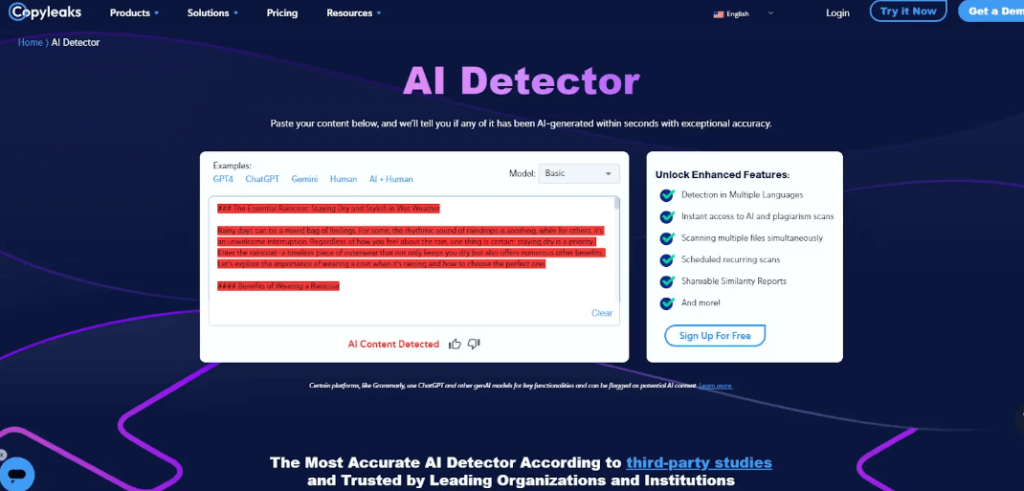
Original content: 100% AI & 0% Human-written content
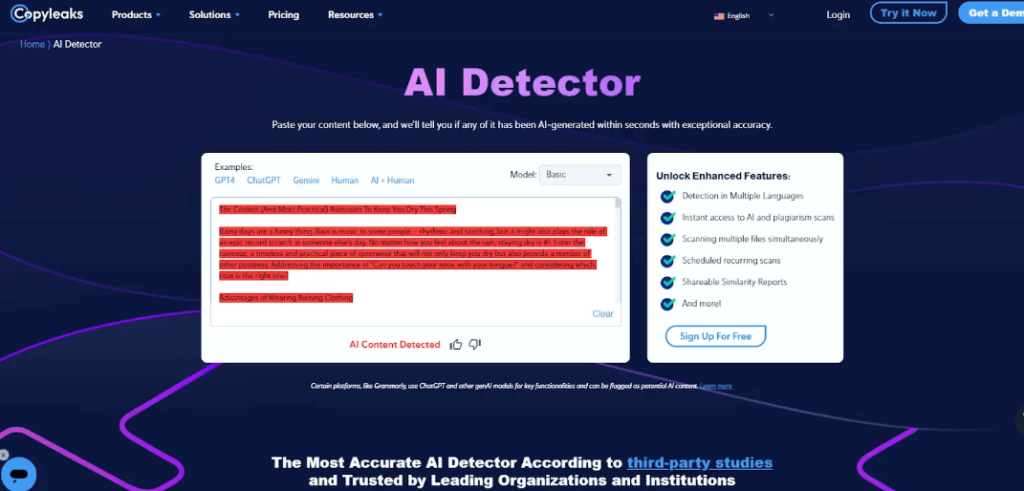
BypassGPT version: 100% AI & 0% Human-written
Results Explained
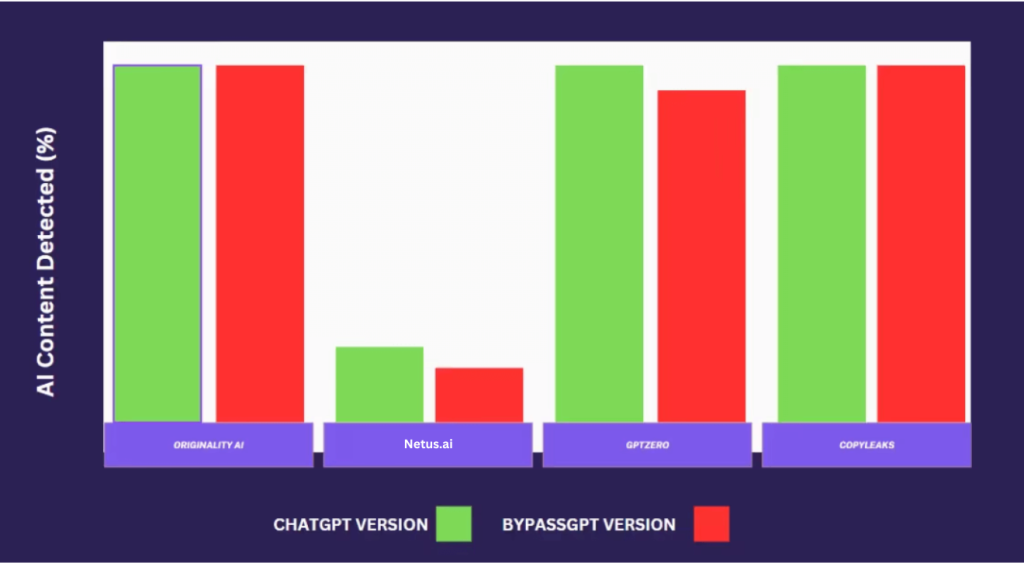
As seen in the results, GPTInf didn’t make much change to how our four AI text finders worked. Only one, Writer AI, thought a person wrote GPTInf’s content. It thought the same about the text from ChatGPT, but its findings are often wrong.
Rather than showing how useful GPTInf is, these findings tell us more about what Writer AI can do.
To do your best, don’t overuse AI tools. Be sure instead to give your own, unique view on anything you make.
Does GPTInf Sacrifice Readability for Stealth?
The key issue with tools like GPTInf is finding the right mix between avoiding AI snoops and keeping the content easy to read. To seem less like a machine, GPTInf might replace words, change the way sentences are formed, or even create tiny mistakes. While these methods might throw off AI detectors, they can also mess up the smooth reading of the content, making it seem weird or too difficult for people to understand.
For example, using unusual equivalents for regular phrases or changing the order of sentences might lead to odd word usage or complex structures. In work or school settings, this could damage trust and make the content less gripping. Readers could find it hard to keep up with the message, ultimately defeating the aim of creating straightforward, impressive communication.
In the end, while keeping a low profile from AI detectors is attractive, readability is still a key aspect of good content. If changes made by GPTInf make the text tougher to comprehend, it’s risking to push away the exact people it wants to reach.
Can AI-Modified Text Truly Fool Human Readers?
AI-edited writings, like those by GPTInf, need to be truly believable to people, not only good at evading AI “guardians”. When people read, they look for the real human feeling behind each word – laughter, tears, the huff of frustration. That’s something AI has difficulty truly capturing.
GPTInf changes AI-made write-ups in a way that even the best AI can’t spot. But still, something is missing. The fullness you get from a human author’s work isn’t there. Even though the AI’s work is flawless, it’s too shiny, too perfect. And we, humans, can sense that. We notice when the writing feels awkward or when a good story goes untold.
Sometimes GPTInf can trick us into thinking that a piece of writing is human. Yet this is more luck than cleverness. It can’t come up with the clever idea, the plot twist, or feel the sun on its face for the first time – experiences that give human writing its depth. So, even if AI can sneak past technological sentinels, the writing often doesn’t speak to us as humans.
The Future of AI Detection and Content Creation
AI and detection systems are improving fast, creating a challenge between making and spotting machine-made content. As AI gets better at copying human-like randomness, detection tools need to dive deeper into context and patterns.
Tools like GPTInf are a bit tricky. They’re useful for those who want the fast work of AI but need to stay hidden. But, this makes us wonder if such tools can last. Will we be able to tell AI-made content from human writing? Or will detection systems get better and check not just words but also logical thinking and creativity?
As AI keeps getting mixed with content making, ethical use might become more important. Instead of trying to trick detectors, content makers might start to blend their work with AI. AI could be a helper, not a replacement. This way, they would follow the rules of detection tools and also make content that people appreciate.
The future of AI detection and making content will be about finding the right mix—using the best parts of humans and machines while being honest and open. Tools like GPTInf could be a first step, but they likely won’t be the final solution in this continuous growth.
FAQ: Gptinf
Is there a charge for GPTInf?
Initially, GPTInf, a tool used to alter computer-created text, is free to use. However, when your cost-free period ends, you’ll have to pay a monthly or annual fee.
What exactly is GPTInf?
GPTInf is among artificial intelligence text generators said to produce writings undetectable to AI monitors, such as Netus.ai. Its performance in this area remains dubious.
How can I prevent AI from detecting my work?
Avoid leaning excessively on automated writing to reduce detection by AI software. Instead, let AI assist and enrich your human-authored thoughts and views.
Is it ethically sound to use AI-powered writing tools?
There are numerous advantages to using AI to create content. It’s quicker than regular writing and serves as an excellent aide or source for brainstorming.
However, if you’re using AI to craft deceptive content, hoping platforms like GPTInf will shield you from detection, it raises ethical concerns.
Related Posts
Through digital leadership we empower people to leverage the opportunities in global economy

